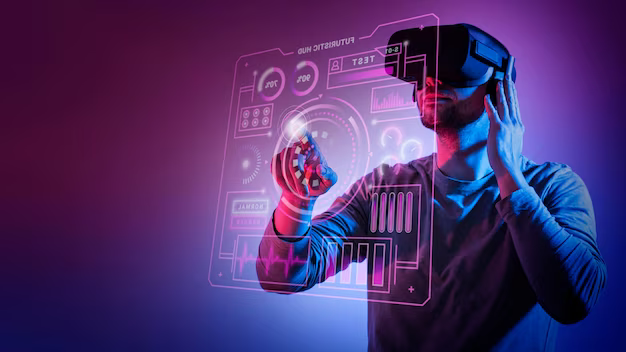AR technology has undergone rapid development with improvements in both hardware and software. AR has carried us from early experiments to broad acceptance, changing how we engage with the digital world in physical space. AR is becoming a significant focal point in many industries, including real estate, healthcare, and retail. This tool was embraced because of its ability to create immersing and dynamic encounters, which is why it continues improving today. AR Development
Some of the popular AR development tools that are significant in creating immersive experiences include Unity AR Foundation, and similar platforms such as ARKit, ARCore, etc. Web-based The progress of AR technology and the use of computer vision together with sensors have greatly helped augmented reality applications.
For AR applications, an immersive experience has to hold users’ attention and delight them. AR development tools allow developers to incorporate computer vision, sensors, and even AR gear in order to create a more engaging and interactive experience by creating immersive environments. Augmented Reality Experiences Real estate, healthcare, and retail are just a few fields where AR is used outside of gaming. Case studies of advanced augmented reality experiences, such as Pokemon GO, Snapchat AR filters, and the IKEA Place app show that various types of applications are possible while paying significant attention to their vast importance. These diagrams provide insight into how augmented reality (AR) can be utilized across diverse sectors to enhance user interactions and present novel ways of interacting with digital content. The latest augmented reality experiences include the IKEA Place app that allows users to preview how furniture will look in their homes, Snapchat AR filters where you can have fun and be creative by interacting with friends through various entertaining effects, or play Pokemon GO exploring several areas as they catch virtual creatures. These illustrations highlight AR’s potential. AR Mobile Apps Popular augmented reality apps such as Snapchat, Instagram, and Google Maps AR navigation have made user engagement and involvement a revolution. These applications have incorporated augmented reality AR elements into them to enable users to enjoy more interactive and immersive experiences and improve their engagement on social media platforms among other ways of enhancing navigation. The rise of mobile augmented reality applications has improved consumer engagement by offering unique and immersive experiences. Augmented reality ( AR) technologies are used on social media streaming platforms such as Instagram and Snapchat, enabling users to interact with their environment and friends in a completely different manner. Google Maps AR navigation has brought an element of fun to the mode of navigating by superimposing digital data onto what surrounds your physical environment thus providing a more dramatic and interactive form. AR Gaming
Pokemon GO serves as an example of how augmented reality (AR) gaming has advanced, showcasing both the exciting opportunities and potential risks involved. It has been crucial to discover revenue strategies and strike a balance, between real-world engagement to create successful AR gaming applications.
Two other notable examples of reality games are Minecraft AR, which brings the video game series into the real world, and Ingress a location-based game. These titles demonstrate the potential of reality, in creating immersive gaming experiences that encourage users to explore and interact with their surroundings.
AR in Education The integration of augmented reality (AR), in education has resulted in a rise in student engagement and retention. One exciting aspect is the implementation of virtual field trips and classroom tools that are now accessible to students. Immersive learning and virtual field trips are among the uses of augmented reality, within the education sector. By projecting content onto their surroundings AR offers students a dynamic and captivating learning experience. This allows them to explore parts of the world and encounter experiences all from the comfort of their classrooms. Future Trends in AR As for the future of AR, it is projected that wearables and glasses will be developed with augmented reality features along with AI-supported AR experiences. 5G is believed to impact AR capabilities and, when integrated with IoT, it will make the potential of AR applications even more enhanced. Future AR applications will largely depend on how the integration of AR occurs with the Internet of Things devices and networks. By uniting AR applications with IoT, users will be able to interact more naturally and immersively with digital material thereby creating a much better connected tightly networked digital experience. AR development will proceed with improved software, hardware, and connection of the AR. AR advances, we could expect more engaging and immersive experiences as well as new applications of the technology. In conclusionAugmented Reality ( AR ) provides more engaging and interactive play, holding huge potential to redefine how we engage with digital content in physical reality. AR technology is rapidly developing, so there has been a profound influence on various sectors such as retail, health care, and real estate.
Well-developed AR tools allow developers to produce immersive experiences and mobile apps have already changed the way users interact. Presently AR technology is improving while there arises a growing need for innovation and adoption to realise its full potential.
. .





